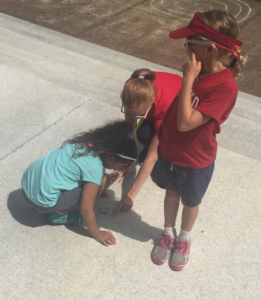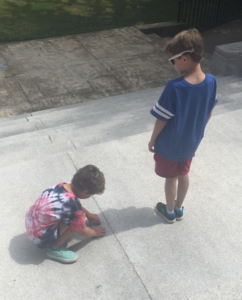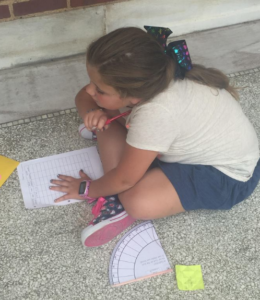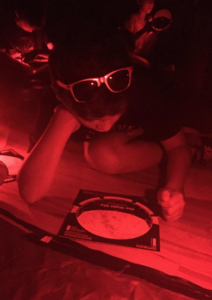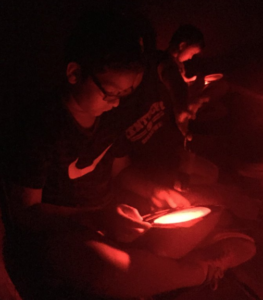Summer SAVY 2018: Session 3, Day 2 – Observational Astronomy (Rising 3rd/4th)
Today we got to practice more observing and used tools to help us understand what we were seeing.
At the start of the day, we discussed what respectful classroom behavior looks like both in general and in groups. We also discussed how to disagree in groups so all and all, our class dynamic became more harmonious.
The first tool we examined today was a star chart. I used the one on the Heaven’s Above website which is a favorite of mine especially because it does not desire personal information and if you log in, it’s really only to keep a location for you. On Heaven’s Above, you can see when the next International Space Station pass is, find information on spacecraft escaping the Solar System (Voyager, Pioneer, New Horizons), and get general data regarding what’s in the sky.
Building off of the star chart, we then looked at planispheres. These are kind of like star charts but can be used the entire year. It’s an adventure to use them so we had to practice before putting them into action. We did also discuss some apps to use on a smartphone or tablet that are useful to help do some practicing as well. The one I use on Android is Sky Map (it is rather simple, also free!). There are several others out there and here are two pretty good review sites talking about the best ones for Android or for Apple: Tom’s Guide and ReviewGeek.
Before getting to our big main event of the day, we brought out the quadrants and compasses to measure the altitude and azimuth of the Sun! While we can’t look directly at the Sun, we CAN use shadows! Your student will be able to show you once they can bring the quadrants home. We took a few readings throughout the day and will do more later.
The big main event was the planetarium! I’m in charge of a portable planetarium through Vanderbilt so we got to use it today. Inside, we first just got oriented, then we used the paper star chart and the planisphere while inside (using red flashlights some good ones and description of why red, then we talked about constellation stories. I started with Greek/Roman constellations (as they are the most well-known in the US) and students were really excited to see how the stories they know fit into the sky! We also looked at a bit of African and a bit of Native American constellations because every culture has their own way of seeing pictures in the sky.
Suggestions for you are talk about some of the constellations they saw and also how different artists can depict the same constellation different ways. This leads to different cultures seeing the same stars in the sky but seeing different pictures. You could also talk about tools for finding what others have seen. You could also explore some of the above websites together!
– Dr. G
Today’s Highlights
